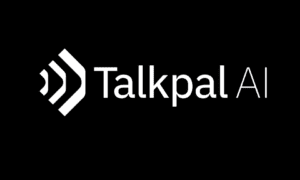Why Curbing Offensive Language Matters
Unchecked profanity weakens trust in online spaces. Persistent offensive language can push away engaged contributors and discourage honest dialogue. As a result, brands may struggle with negative perceptions and lower retention rates.
Research shows that 42% of internet users have experienced harassment, often triggered by vulgar language and hostile messaging. Popular platforms like Reddit and YouTube have faced headlines over moderation issues, which led to advertiser pullback.
While allowing free speech remains important, so does protecting users from intimidation and hate. The right offensive-language blocker manages this balance. It invites lively discussions without letting abusive language poison the conversation.
Essential Traits of a Robust Obscenity Blocker
The most effective bad-word barriers share several features that help communities deliver safe, clean content:
- Real-time scanning: Detects and filters offensive language as users post comments and messages, stopping harmful words from appearing at all.
- Customizable word lists: Lets moderators define which terms cross the line, reflecting specific community values and cultural sensitivities.
- Contextual understanding: Goes beyond keyword spotting. Recognizes when language is used jokingly, as part of a name, or in safe contexts, reducing unnecessary blocks.
Automated solutions such as a profanity filter offer flexible moderation. Integration with content systems streamlines this process and reduces manual work.
Cross-platform compatibility matters too. The same blocker should work on websites, mobile apps, and forums. Easy integration through APIs or plugins also reduces setup headaches and supports growth as new channels arise.
Feature Comparison Table:
| Feature | Benefit | Why It Matters |
| Real-time scanning | Immediate filtering | Stops harm upfront |
| Customizable lists | Adapts to community needs | Respects user values |
| Contextual understanding | Smarter detection | Reduces false positives |
| Cross-platform support | Consistent experience | Covers all channels |
| Simple integration | Faster setup | Less technical work |
Integrating a Content Sanitizer into Your Workflow
Bringing a bad-word barrier into a moderation workflow involves a clear sequence:
- Assess moderation gaps. Review past incidents and pinpoint where moderation fails or slows down.
- Select an API-based solution. Choose a product that can connect with existing content systems.
- Configure rules and thresholds. Define banned words, adjust detection levels, and set up exceptions as needed.
Before fully launching, test the system carefully. Use a sandbox environment to run trial posts and catch errors. Invite moderators to offer feedback on false positives or missed violations. Track performance through benchmarks like accuracy rate and moderation speed.
This hands-on approach ensures that the offensive-language blocker fits the specific workflow and meets performance goals.
Updating Your Vulgarity Shield for Emerging Slang
Language shifts quickly online. If a bad-word barrier stands still, harmful new slang can slip through. Maintaining an effective offensive-language blocker means regular updates.
Three strong strategies keep filters current:
- Community reporting: Enable users to flag missed offensive terms for review.
- Machine-learning retraining: Use AI tools to recognize new patterns and expressions by learning from fresh examples.
- Scheduled audits: Periodically review blocked and allowed content to find gaps.
Add new slang or adjusted phrases to the word list. This ongoing attention helps the bad-word barrier anticipate threats so users remain protected.
Fostering Respectful Dialogue After the Filter
Filters catch a lot, but positive online culture needs extra support. Provide prompts that educate users about posting guidelines or nudge them to soften their tone. Encourage polite phrasing with brief pop-ups, such as:
“Let’s keep it friendly—how about rephrasing this comment?”
Track analytics like flag rates or the number of override requests. Share insights with moderators to refine rules and update community guidelines. Positive reinforcement, such as recognizing users for clean, helpful contributions, can also strengthen the effect of an offensive-language blocker.
Build a Safer Reputation Today
A strong bad-word barrier builds trust, supports compliance, and ensures user satisfaction. Taking the step to trial a leading solution can protect both the brand and its participants.
Stay ahead by prioritizing a clean, courteous environment. Every improvement in moderation lays the foundation for more meaningful, long-term engagement.



































